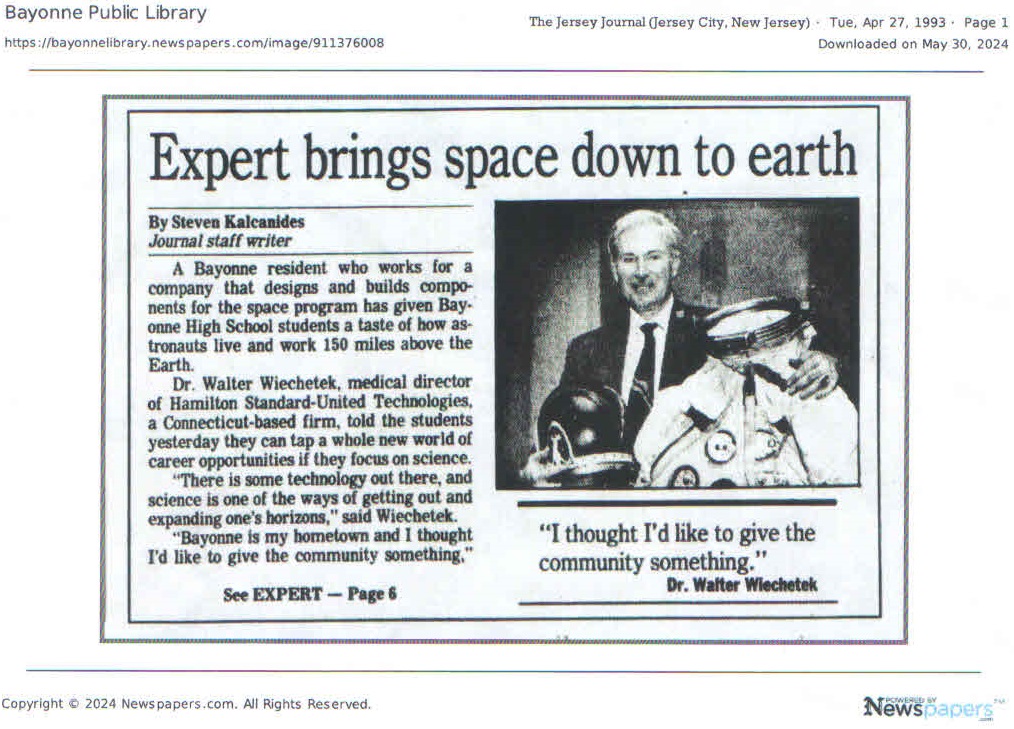
originally published in the Jersey Journal Print Edition
“A Bayonne resident who works for a company that designs and builds components for the space program has given Bayonne High School students a taste of how astronauts live and work 150 miles above the Earth.
“Dr. Walter Wiechetek, medical director of Hamilton Standard-United Technologies, a Connecticut-based firm, told the students yesterday they can tap a whole new world of career opportunities if they focus on science.
“‘There is some technology out there, and science is one of the ways of getting out and expanding one’s horizons,’ said Wiechetek.
“‘Bayonne is my hometown and I thought I’d like to give the community something,’ said the alumnus of Our Lady of Mount Carmel School.
“‘People in Bayonne believe that you can never ever leave. I went to school here and I live here.’
“About 300 science students attended the talk in the high school auditorium, which was the first such presentation made outside New England, said Robert Dawson, director of science.
“Wiechetek, 46, a biology major who graduated from Seton Hall University in the late 1960s, was assisted yesterday by two company engineers, Donald Rethke and John Mancuso.
“Rethke, a mechanical engineer, displayed the space suits used in shuttle missions, the Skylab and the Apollo moon missions. He also displayed the bathrooms used in space over the past 30 years.
“Rethke, also known as ‘Dr Flush’ for his work in designing parts for the space commodes, said bathrooms have evolved greatly over the years, from a plastic bag in the 1960s to a waste management system in the 1990s.
“During the Apollo moon missions, the space commode was simply a plastic bag that was used to collect ‘the right stuff,’ as Rethke called it, and then was stored on the capsules.
“Rethke, who said engineers have been ‘in search of the perfect flush’ since the start of the space program, said the early methods of waste collection had a number of problems including unwelcome odors.
“In addition, he said, you had to hope that the ‘right stuff got into the bag,’ especially since the astronauts often had to deal with zero gravity while orbiting the Earth.
“Skylab, the orbiting space station that later fell to Earth, had a commode that used a seat and a separator. It separated urine from the air in the cabin, to avoid producing odors or mishaps, he said.
“The space shuttle has a sit-down commode that uses modern technology to collect waste, he said. The commode is the size of a small telephone booth and the astronauts have to strap themselves in to avoid floating away, said Rethke.
“Rethke, who displayed the space suits with Mancuso, said students can take advantage of the planned Space Station Freedom if they choose a career in science and get involved in space technology.”
Thanks to the Bayonne Public Library Adult Services team!

